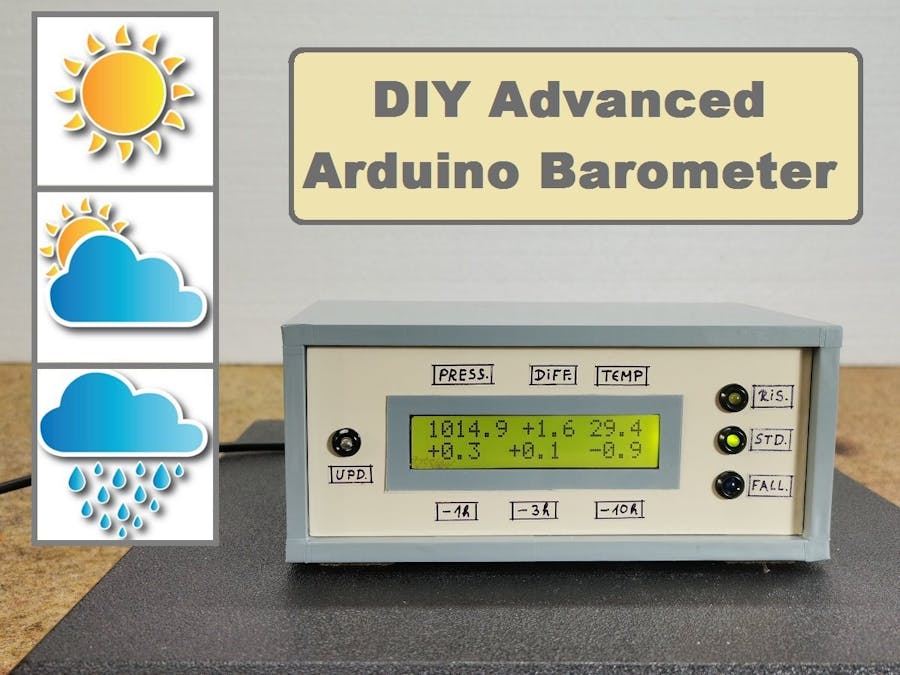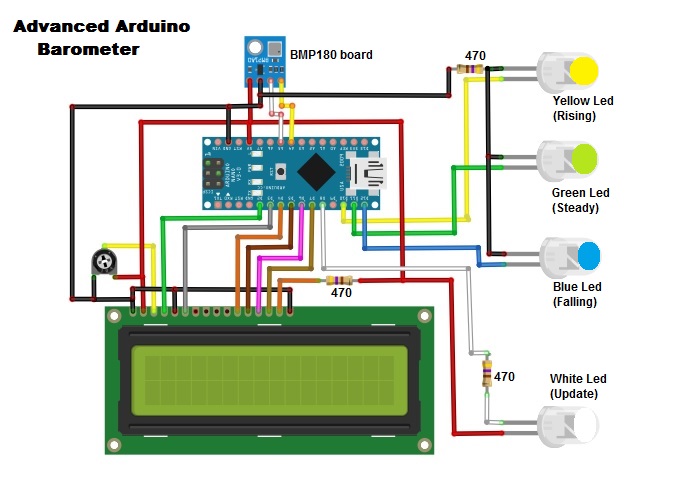A barometer is a scientific instrument that is used to measure atmospheric pressure. Pressure tendency can forecast short-term changes in the weather. This time I will show you how to make an advanced barometer.
Inexpensive home weather stations only show images of raindrops, clouds or the sun. More advanced weather stations show the current pressure value as a number, and the pressure change over the preceding few hours as a rough bar graph, mainly for decorative purposes. Such weather stations are significantly more expensive. Also on the market, there are very sophisticated devices designed for sailors, yachtsmen, etc., with high accuracy showing both pressure changes and the current value, but such devices are very expensive. The device I present to you has all the features of such expensive barometers, but it is very simple to build and the price is many times lower. The original project is described on the cxem.net website and I made some modifications to the code so that now the pressure values are displayed in Hectopascals, and there are also 3 LEDs to show the pressure trend.
It consists of only a few parts:
- Arduino Nano microcontroller
- BMP180 pressure sensor board, which is in direct contact with the surrounding air through this grille for more accurate temperature measurement
- LCD Display 16x2
- two resistors
- and four Leds
The measurement results are displayed on two lines. Immediately after turning on the barometer, the second line will be empty. Numerical values will appear there after 1 hour, 3 hours, and 10 hours, respectively. The first line displays the result of measuring the current atmospheric pressure in Hectopascals, next the deviation of the current pressure value from the average value for a given location, as well as the air temperature in degrees Celsius. The data shown in the top line is refreshed every 6 seconds, and this is displayed by a short flash of the white LED. The second line of the indicator displays the pressure increments over the last hour, three hours, and ten hours. If the pressure has increased during the specified time period, then the corresponding increment is displayed with a plus, otherwise - with a minus. The data in the second line is updated every 10 minutes. The three LEDs show the trend of Atmospheric pressure. If the pressure rises by more than 1.6 hectopascals in the last three hours, the yellow LED lights up (pressure rises). If the change is less than plus / minus 1.6 Hectopascals, the pressure is stable. And if the change is negative and greater than -1.6 hectopascals then we find that the pressure falling. These are quite a number of parameters based on which we can predict the local weather in the short term without using the Internet. Basically, the rising trend indicates a weather improvement, and a falling trend indicates a worsening. Standing pressure means stable weather.
Finally, the device is mounted in a suitable box made of PVC board and coated with self-adhesive wallpaper to get a professional look.

















Comments
Please log in or sign up to comment.